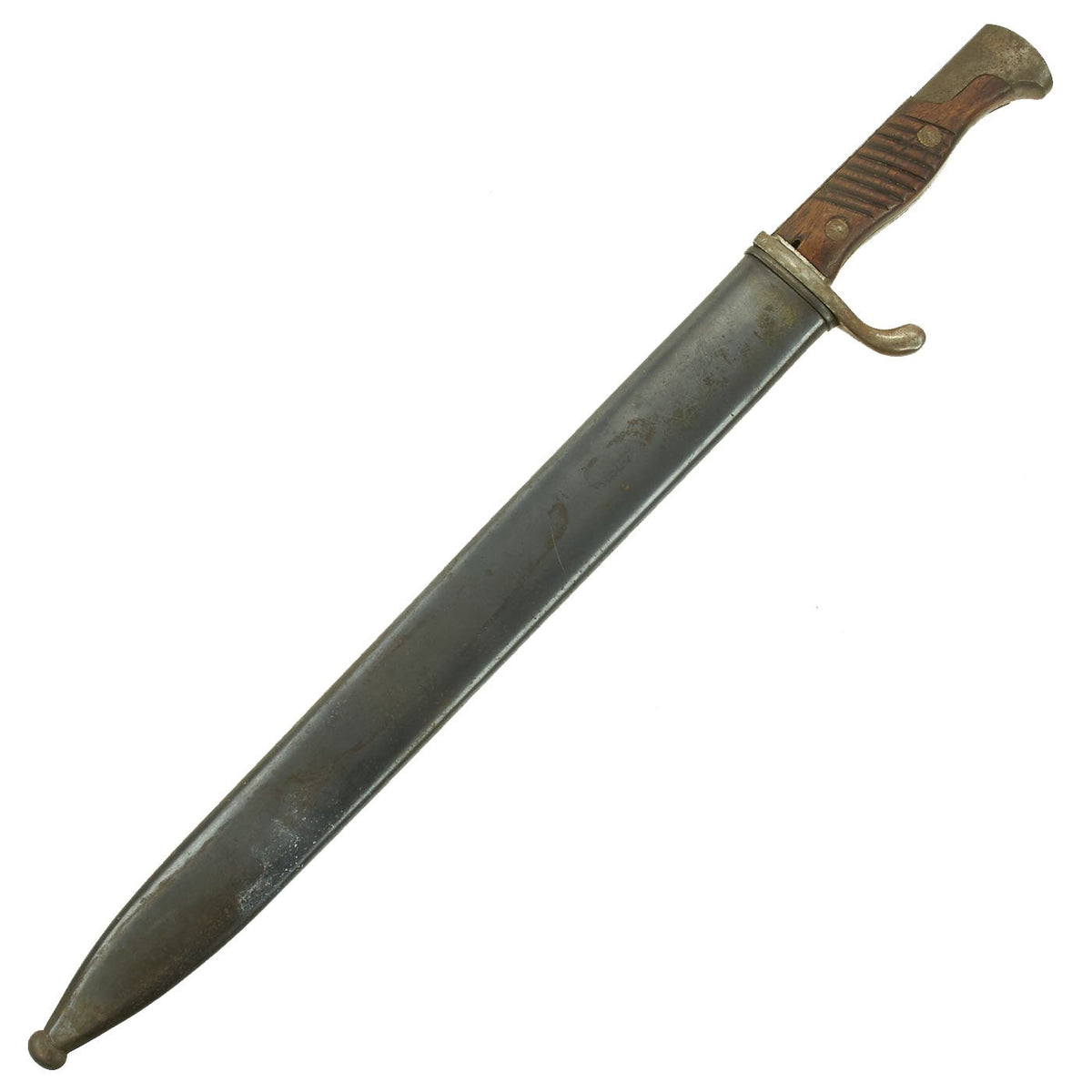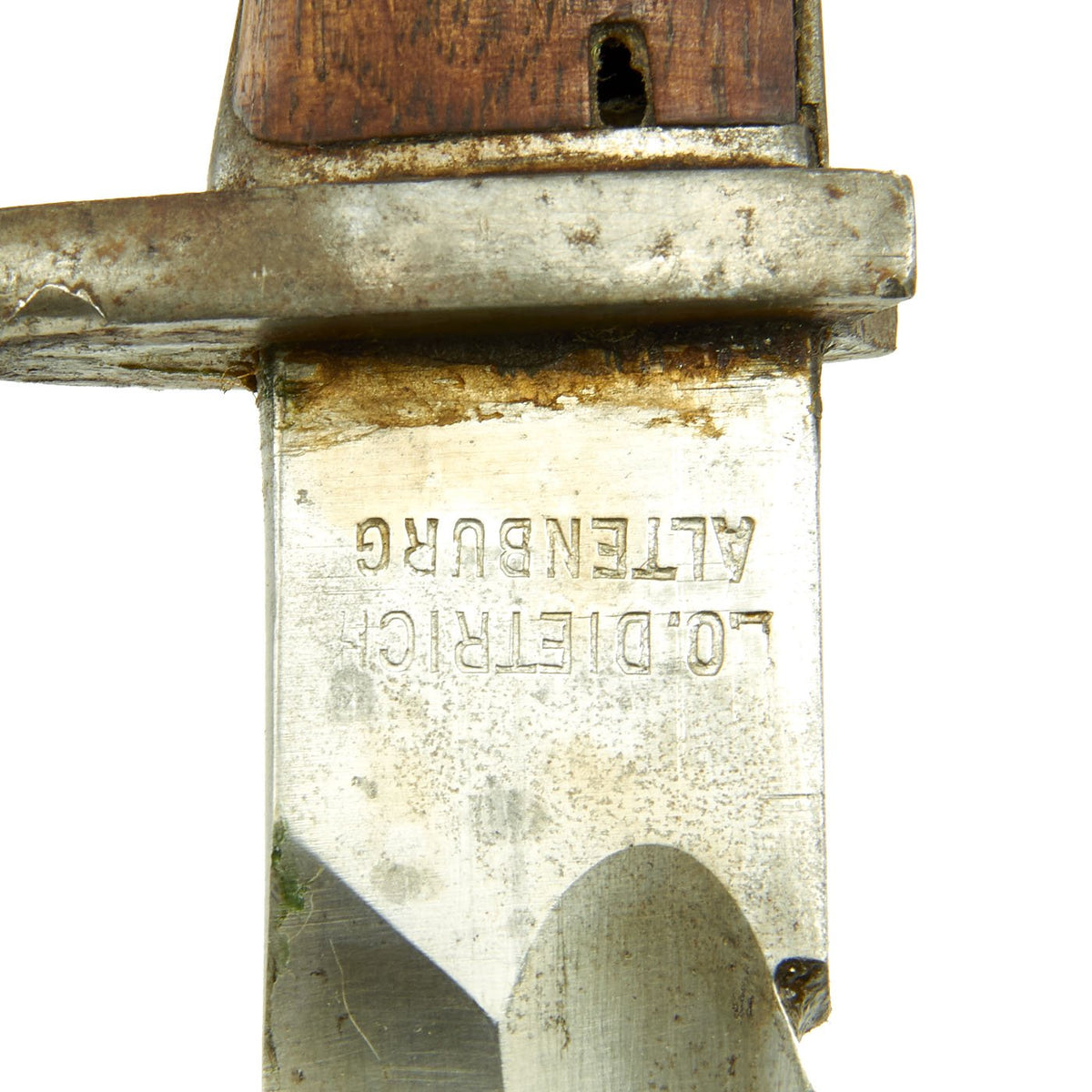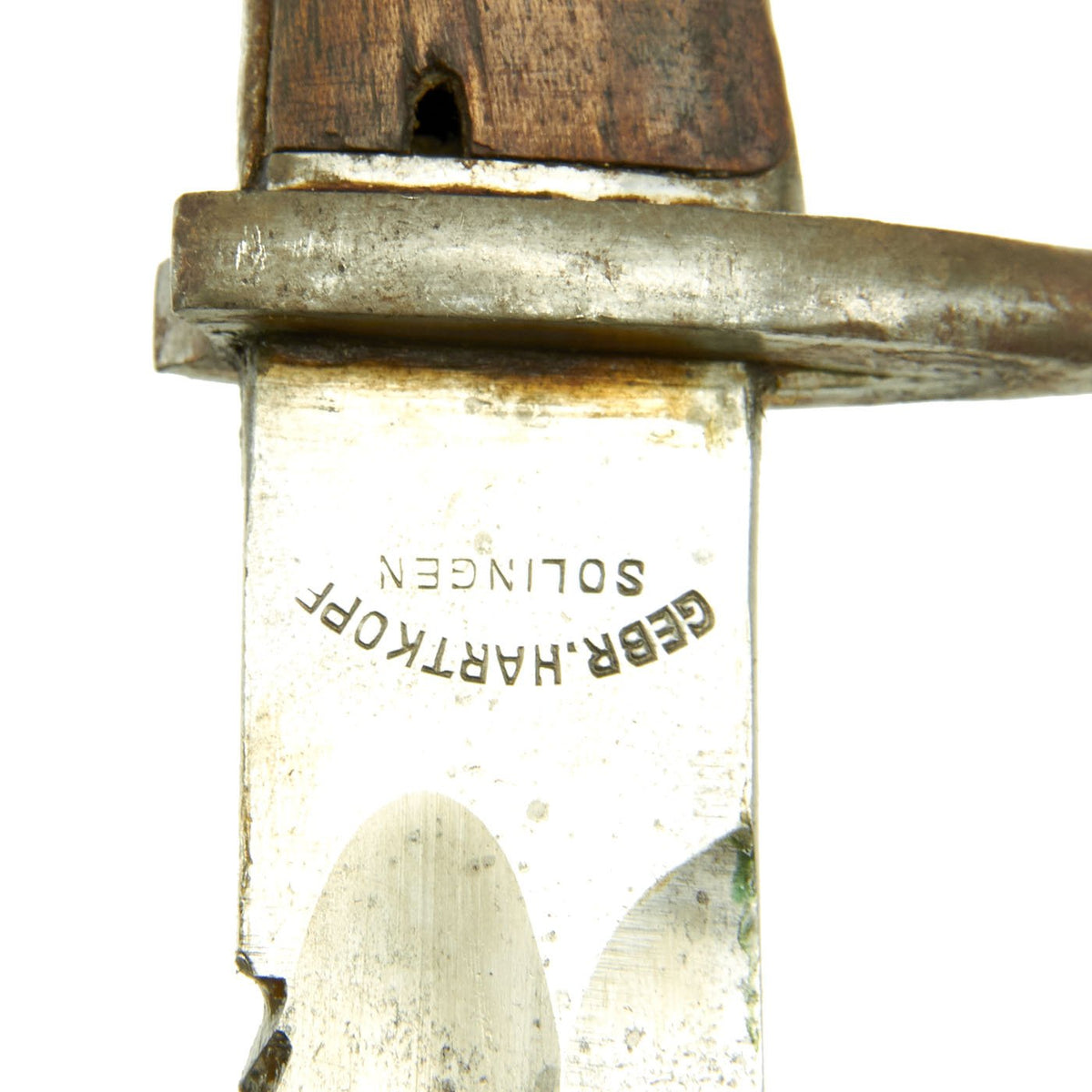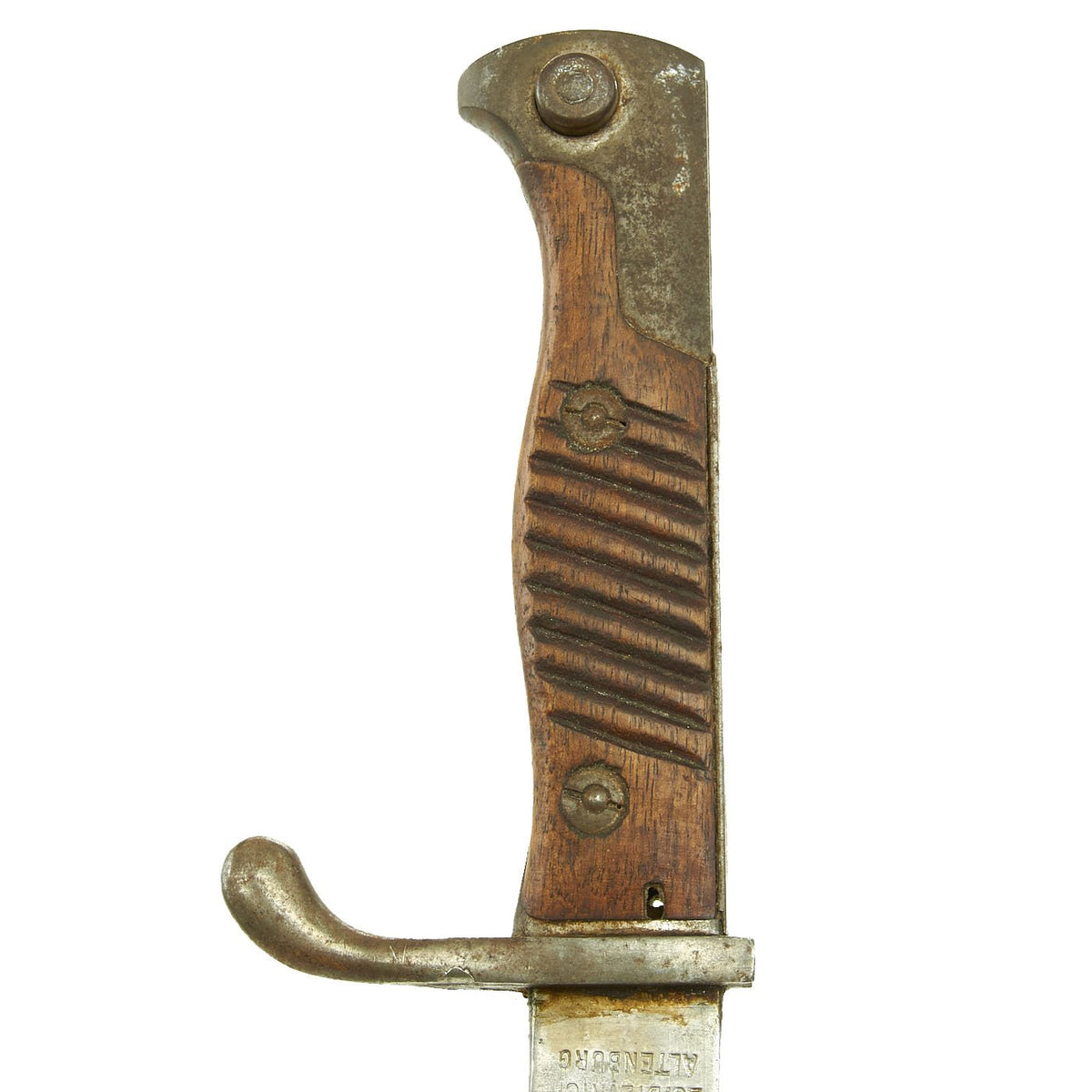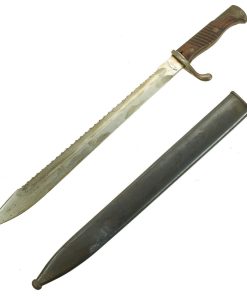Original German WWI M1898/05 n/A Butcher Sawback Bayonet with Scabbard by Rare Maker L.O. DIETRICH Original Items
$ 450,00 $ 135,00
Original Item: Only One Available. This is an excellent rare example of the M-1898/05 Bayonet (Seitengewehr), which was the most common German Bayonet of the First World War. It was intended for use on the standard issue service rifle of Imperial Germany: the Mauser-designed Gewehr 98 (GEW 98). It features a heavy 14.5-inch steel blade with distinct bulge toward the point, giving extra weight and power to the business end, known as a “butcher blade”. This version is known as n/A (neuer Art = newer model). This second pattern lacks the first pattern’s vestigial muzzle ring (or ‘ears’) and has a flashguard on the back of the grip.
This example has a very desirable “sawback” blade, which was intended for use by pioneers to saw through brush and obstacles. Unfortunately a rumor got out that it was intended to inflict grievous harm on enemies, so a lot of the sawback bayonets had this feature removed, making them hard to find. This example has a blade in very good used condition. The blade finish is very nice, with minimal staining and pitting on the bright steel blade. It has however been sharpened, though not enough to alter the blade profile. The sawback itself is in excellent condition.
The hilt has a nice set of original grooved wood grips, which have a lovely aged brown color, and some scratches and small dents. The metal of the hilt has a lovely aged steel patina, with a bit of peppering. The Bayonet lock is fully functional. The blade ricasso is maker marked:
L.O. DIETRICH
ALTENBURG
The reverse ricasso is marked with the company that forced the unmounted blade blank:
GEBR. HARTKOPF
SOLINGEN
Gebrüder Hartkopf, Gesenkschmiede (Drop Forging) was founded in 1872 by brothers (gebrüder) Carl & August Hartkopf. According to GERMAN KNIFE AND SWORD MAKERS by J. Anthony Carter, the company made many blade blanks for 98/05 bayonets during the 1917-1918 era. These were shipped to many makers/finishers, and L.O. Dietrich was one of the major recipients. There are inspection marks on the pommel and blade spine, however no date, common for late war rushed production, which were never sent to the imperial inspectors.
The steel scabbard is in very good – excellent condition, with only a few small light dents. It is still in the original blued steel finish, and was not painted green like many scabbards were during the interwar period. The finish is barely worn. This and the original arsenal grease on the blade seem to indicates that it saw little to no use in service.
A great example of what is becoming a difficult bayonet to find in such fine condition, never messed with, just the way we like to find them, ready to display.
Fast Shipping with Professional Packaging
Thanks to our longstanding association with UPS FedEx DHL, and other major international carriers, we are able to provide a range of shipping options. Our warehouse staff is expertly trained and will wrap your products according to our exact and precise specifications. Prior to shipping, your goods will be thoroughly examined and securely secured. We ship to thousands clients each day across multiple countries. This shows how we're dedicated to be the largest retailer on the internet. Warehouses and distribution centres can be located throughout Europe as well as the USA.
Note: Orders with more than one item will be assigned a processing date depending on the item.
Before shipping before shipping, we'll conduct a thorough inspection of the items you have ordered. Today, the majority of orders will be delivered within 48 hours. The delivery time will be between 3-7 days.
Returns
The stock is dynamic and we cannot completely manage it because multiple stakeholders are involved, including our factory and warehouse. So the actual stock may alter at any time. It's possible that you may not receive your order once the order has been made.
Our policy is valid for a period of 30 days. If you don't receive the product within 30 days, we are not able to issue a refund or an exchange.
You can only return an item if it is unused and in the same state as the day you received it. You must have the item in its original packaging.
Related products
Uncategorized
Uncategorized
Australian WWII Owen MK1 Machine Carbine SMG Custom Fabricated Replica with Sling Original Items
Uncategorized
Uncategorized
Uncategorized
Band of Brothers ORIGINAL GERMAN WWII Le. F.H. 18 10.5cm ARTILLERY PIECE Original Items
Uncategorized
Uncategorized
Uncategorized
Uncategorized
Armoured Fighting Vehicles of the World: AFVs of World War One (Hardcover Book) New Made Items
Uncategorized
Uncategorized
Uncategorized
Uncategorized
Uncategorized
Uncategorized
Uncategorized
Uncategorized
Uncategorized


